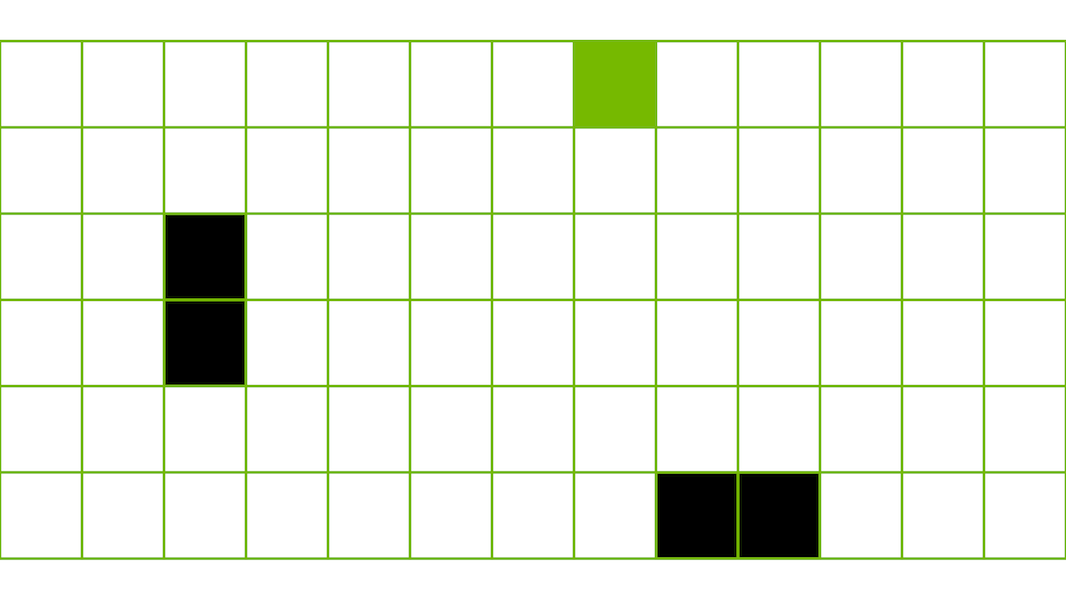
Streamlining Quantum Error Correction and Application Development with CUDA-QX 0.4
Sources: https://developer.nvidia.com/blog/streamlining-quantum-error-correction-and-application-development-with-cuda-qx-0-4, developer.nvidia.com
TL;DR
- CUDA-QX 0.4 accelerates quantum error correction (QEC) research by delivering end-to-end workflows: code definition, noise modeling, decoding, and deployment with QPUs, all exposed through a comprehensive API. CUDA-QX 0.4 release notes
- The release adds automated generation of detector error models (DEMs) from QEC circuits and noise models, usable for simulation sampling and syndrome decoding via the CUDA-Q QEC decoder interface.
- A tensor-network decoder with Python 3.11 support is introduced, offering an exact-contraction alternative to other decoders and serving as a reliable benchmark.
- BP+OSD decoding gains include configurable convergence checks, message clipping to improve numerical stability, two BP algorithms (sum-product and min-sum) with adaptive scaling, and optional LLR-history logging.
- The Solvers library gains a new out-of-the-box Generative Quantum Eigensolver (GQE) based on a transformer AI model, designed to find eigenstates of quantum Hamiltonians, presenting a generative-classical hybrid approach distinct from VQE.
- For more details, see the official CUDA-QX 0.4 release notes on GitHub. CUDA-QX 0.4 release notes
Context and background
Quantum error correction (QEC) is central to making large-scale, commercially viable quantum computers possible. QPU builders and algorithm developers are increasingly concentrating on QEC as the greatest opportunity and the biggest challenge in current quantum computing research. CUDA-Q QEC aims to speed up researchers’ QEC experiments by delivering fully accelerated, end-to-end workflows—from defining and simulating novel codes with circuit-level noise models, to configuring realistic decoders and deploying them alongside physical QPUs. Each component in this workflow is exposed as user-definable through a comprehensive API. DEMs, or detector error models, provide a useful way to describe the setup in stabilizer-based QEC workflows. DEMs were originally developed as part of Stim (Quantum, 2021) and are described in related literature. CUDA-QX 0.4 enables automatic DEM generation from a specified QEC circuit and noise model. The resulting DEM can be used for both circuit sampling in simulation and decoding the resulting syndromes using the standard CUDA-Q QEC decoder interface. For memory circuits, the necessary logic is already provided behind the CUDA-Q QEC API. The Tensor Network approach to QEC decoding offers benefits in research: tensor-network decoders are easy to understand, based on a code’s Tanner graph, contract to compute the probability that a logical observable flips given a syndrome, and they do not require training (though training can help). CUDA-QX 0.4 introduces a tensor-network decoder with support for Python 3.11 onward. The CUDA-QX 0.4 release showcases a tensor network decoder and compares performance against other decoders, illustrating logical error rate (LER) behavior on open-source datasets referenced in contemporary research. The project also notes ongoing work and benchmarks in the literature, including open-source implementations and GPU-accelerated baselines. For more details, consult the Python API documentation and examples and the CUDA-Q QEC API documentation. In addition, CUDA-QX 0.4 adds improvements to its GPU-accelerated Belief Propagation + Ordered Statistics Decoding (BP+OSD) implementation, described below, and introduces a new Generative Quantum Eigensolver (GQE) in the Solvers library, reflecting ongoing exploration of AI-assisted quantum algorithm design. GQE uses a transformer model to search for ground states of quantum Hamiltonians and offers a different paradigm from traditional VQE parameterizations. NVIDIA notes ongoing work on the GQE loss function and related design considerations, with examples aimed at small-scale simulation. See the CUDA-QX 0.4 release notes for full details and API references.
What’s new
- Automated detector error-model (DEM) generation from a specified QEC circuit and noise model. The DEM is usable for both circuit sampling in simulation and decoding via the CUDA-Q QEC decoder interface. This feature enables end-to-end DEM-driven workflows for QEC studies.
- Out-of-the-box tensor network decoder with Python 3.11 support. The decoder contracts the tensor network defined by a code’s Tanner graph to estimate the probability of logical errors given a syndrome and can serve as a precise, training-free reference.
- GPU-accelerated Belief Propagation + Ordered Statistics Decoding (BP+OSD) improvements:
- Iter_per_check: configurable BP convergence checking interval (default 1 iteration). Allows reducing overhead in scenarios where frequent convergence checks aren’t necessary.
- clip_value: message clipping to avoid numerical instability. A non-negative threshold; 0.0 disables clipping (default).
- bp_method: choice between sum-product (robust for most scenarios) and min-sum (computationally efficient and can converge faster in some cases).
- scale_factor: adaptive scaling for the min-sum algorithm. Use a fixed factor (default 1.0) or enable dynamic computation by setting 0.0.
- opt_results with bp_llr_history: logging of log-likelihood ratios (LLR) over decoding iterations, with configurable history depth.
- Generative Quantum Eigensolver (GQE) implementation in the Solvers library. GQE is a novel hybrid algorithm for finding eigenstates (especially ground states) of quantum Hamiltonians using generative AI models. It uses a transformer model and is designed to address convergence issues that can affect traditional VQE approaches. The release includes a cost function suitable to small-scale simulation and references to foundational work in the field. For complete details, see the Python API documentation and examples.
- New API for auto-generating detector error models from noisy CUDA-Q memory circuits, enabling streamlined QEC model creation directly from circuit noise data.
- The CUDA-QX 0.4 release notes and related documentation are available on GitHub for ongoing development, feedback, and contributions.
Why it matters (impact for developers/enterprises)
These updates collectively accelerate the pace of quantum error correction research and application development by delivering an end-to-end, GPU-accelerated workflow. Researchers can now define QEC codes, model realistic noise, generate detector error models automatically, simulate circuits, and decode syndromes using a unified API, all within CUDA-QX. The tensor network decoder offers a transparent, exact approach that can serve as a benchmark, while the BP+OSD improvements provide flexible, stable, and faster decoding under a variety of conditions. The introduction of GQE provides a new AI-assisted path for ground-state search, potentially mitigating convergence challenges seen in VQE-based workflows. For enterprises, these capabilities can shorten experimentation cycles, improve reproducibility, and simplify integration with existing quantum software stacks. The all-GPU pipeline helps scale QEC studies as researchers explore larger codes and more complex noise models, advancing both research and practical deployment.
Technical details or Implementation
Detector error models and memory circuits
- DEMs describe the measurement and error landscape for stabilizer circuits, enabling accurate decoding and sampling in simulations. CUDA-QX 0.4 can auto-generate a DEM from a given QEC circuit and its noise model, and the resulting DEM supports both circuit sampling and decoding via the CUDA-Q QEC API.
- For memory circuits, the necessary decoding and DEM logic is available behind the CUDA-Q QEC API, streamlining workflows that include memory-style error models.
- The DEM generation capability is grounded in Stim-style concepts (detector-based noise descriptions) and integrates with the CUDA-Q QEC decoder interface to produce usable decoding inputs.
Tensor network decoding
- The tensor network decoder is implemented with Python 3.11+ support and provides exact contraction-based probability computations to assess the likelihood that a logical observable has flipped, given a syndrome.
- The approach serves as a transparent, verifiable benchmarking tool, complementing other decoders and supporting research that relies on exact or near-exact decoding results.
- CUDA-QX 0.4 includes Python API documentation and examples to facilitate adoption and experimentation.
BP+OSD improvements
- Iter_per_check introduces configurable convergence-check intervals per check, reducing overhead when frequent checks are unnecessary.
- clip_value adds a non-negative threshold to clip message values, protecting against overflow or precision loss; disabled by default (0.0).
- bp_method offers two algorithms: sum-product and min-sum, with scale_factor allowing fixed or dynamic scaling (0.0 enables dynamic computation).
- opt_results with bp_llr_history enables researchers to log LLR evolution during decoding, with configurable history depth.
Generative Quantum Eigensolver (GQE)
- GQE is implemented in the Solvers library and uses a transformer-based AI model to find eigenstates, especially ground states, of quantum Hamiltonians.
- It represents a generative-classical hybrid approach as an alternative to conventional VQE parameterized quantum circuits, aiming to ease convergence issues observed in VQE (such as barren plateaus).
- The release provides a cost function suitable for small-scale simulation and references foundational work in the field; complete technical details are available in the Python API documentation and examples.
Auto-generation API for detector error models
- CUDA-QX 0.4 adds an API to auto-generate detector error models directly from noisy CUDA-Q memory circuits, enabling streamlined construction of DEM-driven QEC pipelines.
References and access
- NVIDIA encourages users to review the CUDA-QX 0.4 release notes on GitHub for full details, examples, and API references. CUDA-QX 0.4 release notes
Key takeaways
- End-to-end QEC workflows are now more accessible through automated DEM generation, end-to-end coupling of codes, noise models, decoding, and deployment.
- A tensor network decoder with Python 3.11 support provides a precise, training-free decoding option suitable for benchmarking.
- BP+OSD decoding gains improved flexibility and stability through iteration controls, clipping, algorithm choice, adaptive scaling, and optional logging.
- The Generative Quantum Eigensolver (GQE) introduces a transformer-based AI approach to eigenstate search, offering an alternative to traditional VQE workflows.
- A new API enables auto-generation of detector error models from memory-circuit noise, simplifying model creation for QEC research.
FAQ
-
What is CUDA-QX 0.4 introducing for QEC workflows?
It adds automated DEM generation, a tensor-network decoder with Python 3.11 support, BP+OSD improvements, and a new GQE in the Solvers library to streamline end-to-end QEC development.
-
What is a detector error model (DEM) and why is it useful?
A DEM describes the error landscape of a QEC circuit at the detector level and can be generated automatically from a QEC circuit and noise model for use in simulation sampling and decoding.
-
How does the tensor network decoder fit into CUDA-QX 0.4?
It provides an exact-contraction-based decoding option compatible with Python 3.11+ and serves as a reference for decoding performance in QEC studies.
-
What is GQE and how does it differ from VQE?
GQE is a Generative Quantum Eigensolver that uses a transformer AI model to find eigenstates, shifting program design to a classical AI model and potentially mitigating convergence issues seen in VQE.
-
Where can I find the release notes?
The official CUDA-QX 0.4 release notes are available on the NVIDIA developer site and linked in this document. [CUDA-QX 0.4 release notes](https://developer.nvidia.com/blog/streamlining-quantum-error-correction-and-application-development-with-cuda-qx-0-4)
References
More news
NVIDIA HGX B200 Reduces Embodied Carbon Emissions Intensity
NVIDIA HGX B200 lowers embodied carbon intensity by 24% vs. HGX H100, while delivering higher AI performance and energy efficiency. This article reviews the PCF-backed improvements, new hardware features, and implications for developers and enterprises.
OpenAI reportedly developing smart speaker, glasses, voice recorder, and pin with Jony Ive
OpenAI is reportedly exploring a family of AI devices with Apple's former design chief Jony Ive, including a screen-free smart speaker, smart glasses, a voice recorder, and a wearable pin, with release targeted for late 2026 or early 2027. The Information cites sources with direct knowledge.
Shadow Leak shows how ChatGPT agents can exfiltrate Gmail data via prompt injection
Security researchers demonstrated a prompt-injection attack called Shadow Leak that leveraged ChatGPT’s Deep Research to covertly extract data from a Gmail inbox. OpenAI patched the flaw; the case highlights risks of agentic AI.
Predict Extreme Weather in Minutes Without a Supercomputer: Huge Ensembles (HENS)
NVIDIA and Berkeley Lab unveil Huge Ensembles (HENS), an open-source AI tool that forecasts low-likelihood, high-impact weather events using 27,000 years of data, with ready-to-run options.
How chatbots and their makers are enabling AI psychosis
Explores AI psychosis, teen safety, and legal concerns as chatbots proliferate, based on Kashmir Hill's reporting for The Verge.
How to Reduce KV Cache Bottlenecks with NVIDIA Dynamo
NVIDIA Dynamo offloads KV Cache from GPU memory to cost-efficient storage, enabling longer context windows, higher concurrency, and lower inference costs for large-scale LLMs and generative AI workloads.





